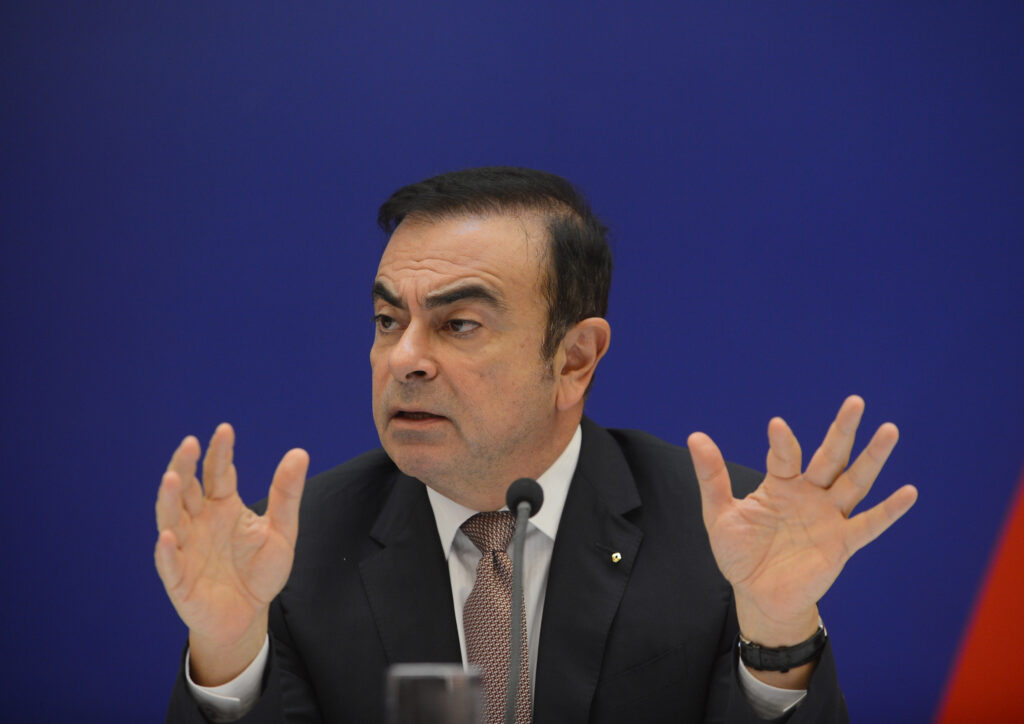
The Chair-CEO Relationship: Time to dial things up?
By Michael Jenkins and Dr Robyn Wilson
Introduction – Chair-CEO Relationship
Our world has been turned upside down in a way that no one, even in early 2020, could ever have imagined. The ruptures COVID-19 continues to cause has obliged every one of us to rethink the way we behave and the way we do things. Everything is up for grabs and if ever there was a silver lining to something as devastating as the ongoing pandemic, then the opportunity to question and scrutinise “the way we do things round here” is something immediate that we can grasp and run with. There is no better time than now to re-evaluate and re-calibrate.
In this article we wanted to put something that is critical to the success of the organisation under close scrutiny and ask:
Are we doing as well as we could be?
Is there something more that can and should be done?
That something is the Chair-CEO relationship.
The first thing to recognise and call out is that the very nature and sensitivity of the Chair-CEO relationship can often mitigate against an honest, human evaluation of what works and what doesn’t. So for instance, getting a Chair or a CEO to admit that their relationship with the other is not working well – and to be willing to address the underlying issues – is something that we do not see very often even under “normal circumstances”. And while CEOs and their performance are habitually evaluated by Boards, it is comparatively rare to see the reverse happening (with the notable exception of evaluation by the markets, which are often quick and brutal in their assessment of whether the Chair and CEO are competent or not). Why is it so important for Boards and Chairs to allow their own performance to be scrutinised? It is not just because of the necessity to provide and to prove strong governance. It is equally important, in our opinion, to ensure that the Board is the right kind of Board – for example – to steer a given organisation through choppy waters. But first things first: are the right Chair and CEO on board?
Alignment and shared purpose
Few would disagree with the notion that the Chair-CEO relationship is of paramount importance to organisations, whether public, private, or not-for-profit – as the pair seek to achieve their shared objectives. Where the relationship can come spectacularly unstuck is when there is a lack of alignment on what those objectives actually are. In the news recently, the man who was effectively the chief scientist of the European Union, the now former head of the European Research Council (ERC), the Italian-American Mauro Ferraro, resigned in dramatic fashion, attacking the European Union’s scientific governance and political institutions even as the Research Council itself said that his resignation came after a unanimous 19 member country vote of no-confidence in his leadership. Observers concluded that Ferraro’s personal take on what should be done to lead Europe’s scientific response to COVID-19 collided with the differing views of the member nations and the shared view of his stakeholders that there is a way and a protocol for getting things done. Ferraro’s approach was incompatible with those practices.

Another recent example of a cataclysmic clash between CEO and Board happened in Japan. The automaker Nissan was the backdrop to a dramatic falling out between CEO Carlos Ghosn and his Board, resulting in the arrest of Ghosn amidst accusations of illegal corporate behaviour, followed by Ghosn’s flight from Japan to one of his home bases, Lebanon. The reasons for Ghosn’s downfall are many – but again, it seems that the direction of the CEO and the preferences of the Board and Chair were completely out of sync: on the one hand Ghosn was pushing for more integration between Nissan, Renault and other players, while the Board, supported as we now know by members of Ghosn’s executive team, wanted to move the company in a completely different direction. It may be years before the facts of the matter become completely clear, a situation not helped by the fact that a court case to decide the issues seems a distant possibility and the whole affair is – for the time being – somewhat eclipsed by the events in Japan caused by COVID-19.
Yet another example from the recent past: the flamboyant and charismatic Camilla Batmanghelidjh, the Iranian-born Chief Executive of the UK children’s charity Kids Company, was forced to resign in 2015 following allegations of mismanagement and squandering funds – funds which in large part came from the UK government (with Prime Minister David Cameron one of Batmanghelidjh’s biggest fans). The charity had got to the point where civil servants had started to question whether it offered value for money – and decided that any further funding would require the CEO to stand down. Batmanghelidjh was – and is – undoubtedly an extremely talented individual with a drive to help the poorest and neediest of Britain’s children and she was at the helm before and during the crisis at the charity – but a bigger question remains, where was the Board in all of this, and what exactly was the Chair’s role?
And another interesting question also arises. In the examples we have used, there is no mention of the CHROs or any roles they might have played. If the Chairs in each case were ineffective or invisible, or both – who might have provided the CEOs with what could have been invaluable feedback on their behaviour or practices? We will be examining the role of the CHRO in respect of the CEO and Chair in our next article in this series.
But for now, yet another related question: what structures existed, in the examples cited above, to ensure that Boards and their Chairs did their jobs properly? It seems that often circumstances have to reach boiling point before anything shifts.
And by then it is usually too late.
The impact of a poor Chair-CEO relationship
When reading about the failures of the Chair-CEO relationship, we should be under no illusion that these failures cause major impacts that seep right through the business. So, as we dig further into what has been written around these relationships, a potential gap in thinking between the Chair and CEO begins to show itself:
- Are the Chair and CEO wanting the same thing for the organisation or is there a lack of shared understanding?
- Does the Chair orchestrate the Board well enough to ensure that the CEO is supported in her plans – and for her part, does the CEO solicit views from each Board member in a way that helps get everyone moving in the same direction?
- How “human” is the relationship between the Chair and the CEO?
- What part does legacy play in the complex Chair-CEO relationship? Is there an inherent tension between scoring short term successes (the CEO) and the longer-term expectations of “leaving one’s mark” (the Chair)? How can these things be reconciled?
Our view is that there is a golden thread, a common denominator that, if done right and well, will enable both Chair and CEO to reach their objectives. That critical element is trust and the trust itself is the product of a genuine, human relationship between the Chair and the CEO, built on mutual respect.
Acting to fix relationship troubles – but watch the how!
We would like to believe that no one would dispute the need to review the performances of CEOs and Chairs. Where it can get messy is around the how. Good practice with respect to these activities should be established early on in the relationship and made transparent. Something for the CHRO to help out with, perhaps?
Only too often CEOs (mostly) are appraised when there is a perception on the part of the Chair (mostly) that things are not as the Chair wishes them to be. Action must be taken and again, only too often, indirect “processes” are set in motion (and it has to be said that it is much harder for the CEO to initiate such action).
This was the case in Australia when the relationship between the Chair of the Australia Broadcasting Commission (ABC) and CEO soured, with resulting headlines like “Michelle Guthrie, Justin Milne fight forced ABC board into a tough choice” (Financial Review, 14th November 2018). In the lead up to this point in time, the Chair believed that, amongst other things, the CEO had lost the confidence of the staff, so a consultant was called in to administer a 360 assessment (where raters, including direct reports, were asked to evaluate the CEO).
According to reports, the ABC CEO’s scores were low in various categories and she was given an executive coach to support her development plan and to assist her in tackling her action items. However, it became apparent in a subsequent TV interview that this 360 had ended up being used as an appraisal – rather than as a development opportunity (for which purpose such 360 assessments are designed). At some point, another member of the Board, who was a coach, was part of these discussions.
We are of the opinion that a 360-survey used correctly can be an effective tool for development: such surveys need accredited expert coaches to debrief them and the conversations which are part of the process, should be carried out in a safe environment. However, to turn around and potentially use the results of a developmental tool as a reason to initiate the removal (often sudden) of a CEO is poor form, especially if there is no opportunity for dialogue. We are left wondering how many honest conversations were avoided.
Time to Reflect?
If you are a Chair or a CEO reading this, what things do you need to check now – in service of developing the relationship for the better and for the success of the organisation?
For Chairs
- How often do you meet your CEO? How do you connect and check in?
- What role do you play on the Board? Do you dominate or do you orchestrate?
- Are you past your sell-by date? Might it be time to step aside and let someone else take up the role?
- Do you actively help the CEO to navigate the complexity of stakeholder relationships?
- Do you enjoy the kind of honest and straightforward relationship with your CEO that allows you to challenge and support in equal measure?
- Have you and your CEO made your respective boundaries clear to each other?
For CEOs
- How often do you meet your Chair? How do you connect and check in?
- What relationships do you have with other Board members? Do you know how to involve them without making your Chair feel blindsided?
- Are you past your sell-by date? Might it be time to step aside and let someone else take up the role?
- Do you work with the Chair to get under the skin of the complexity of stakeholder relationships or are you passive, leaving things to chance?
- Do you enjoy the kind of honest and straightforward relationship with your Chair that allows you to push back when you need to and “speak truth to power”?
- Have you and your Chair made your respective boundaries clear to each other?
If the answer to any of the above is: “I don’t really know”; or “I’m not sure”; or simply “No” – then our advice is that you need to start paying attention now. No need to press the panic button (yet) but for sure, you need to act quickly to ensure your relationship doesn’t end up being built on foundations of sand.
Further questions that arise
So, who should step in should the Chair-CEO relationship be in trouble?
The first thing to recognise is that each situation will be different for a variety of reasons. No two cases will the same due to the personalities and context involved. That said, we have the following observations to make:
– In some situations, other directors on the Board may step in, or even the CFO, CHRO or a similarly senior person – depending on the quality of their relationship with the individuals and even their personal sense of safety (for their career).
– In other situations, the Chair and/or CEO may be self-aware enough to reach out for help to a trusted colleague, friend or even a coach. These people could help them think through the situation and explore options.
However, finding the support they may need could be a more sensitive exercise than is immediately apparent. The confidant would need to be carefully chosen to ensure confidentiality for personal, organisational, and even commercial reasons (the media love a good gossip story and shareholders then get worried about their shareholding, for example). It may also not be appropriate for the CEO to talk with anyone on their Executive Team for similar reasons – nor may it be wise.
Another question worth asking would be – what would acting early look like? One key item would be for the Chair and CEO to book regular check-in times from the beginning of their relationship and honour them, using these get-togethers to talk about how they are working together – and not to use the time exclusively to cover numbers, pipeline, payroll, and other business related topics. The time together would be protected and focused. The sessions would not need to be long: it is more important that they should happen regularly.
What are some good practices that should be in place to help to support the Chair-CEO relationship?
Building on what has been discussed so far, it may be that the Chair-CEO check-in be characterised as a formal requirement – in that it is reported that it occurs. Tools – consisting of good questions designed for this kind of conversation – could also be made available.
More formally, there should be clearly articulated and transparent processes that ensure both performance evaluations and development opportunities take place for both the Chair and the CEO (and that these are distinctly different and used for different reasons). Care needs to be taken to ensure that KPIs are understood and shared, and not just assumed – and that they do not simply revolve around keeping the company afloat and/or making money. The objectives for which the CEO is held accountable often benefit from being “filled out” and enriched, so as to ensure there is a set of qualitative as well as quantitative shared/agreed objectives. Chairs and directors, when conducting the appraisal of the CEO, also need to bear in mind that they are dealing with a human being.
What about the performance of the Chair you may ask? Ideally, the Chair should ensure that a performance review of the Board – with an external partner – is conducted every 3 or 4 years. At the very least, the Board needs to ascertain, on a regular basis, what it needs to start, stop, or continue. Such a review could be extended to include Board members providing feedback to each other. By definition, the Chair’s performance would also be subject to review.
What would a “personal contract” between the Chair and CEO look like – and what would be the best way to put it into place?
Typically, a coach or trusted colleague (trusted by both parties) could facilitate this process. Firstly, it would involve having both the Chair and CEO respond to a set of questions and requests (like “For me to do my job well, I would need x from you” or “When I need support, here’s what works and does not work for me”). Next, the coach would facilitate a deliberate discussion around how both parties can make things work. The result of this discussion would then form the “personal contract” between them. And it is good practice to return to this “contract” from time to time to check that it is still fit for purpose.
Conclusion on the Chair-CEO relationship
In closing we would like to share some wisdom from our colleague Glenda Eoyang, founder of the Human Systems Dynamics Institute which we feel would be an ideal modus operandi/vivendi for Chairs and CEOs to behave together. She proposes we should advocate for the following:
- Turn judgment into curiosity
- Turn conflict into shared exploration
- Turn defensiveness into self-reflection and
- Turn assumptions into questions
In this COVID-19 world in which we currently live, we have seen very quick change around various aspects of our organisations and work life. We have talked about remote working for years, and yet suddenly, we are all doing it now and learning quickly. Change is most definitely in the air.
So, what about the Chair-CEO relationship? Greater scrutiny and deeper insights into the relationship are needed; relationships need to be less transactional and more human(e); trust and resilience need to be developed; blame and ego need to be set aside once and for all.





No Comments